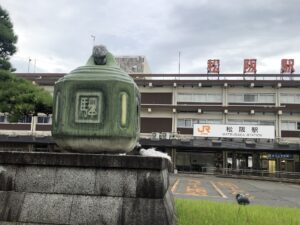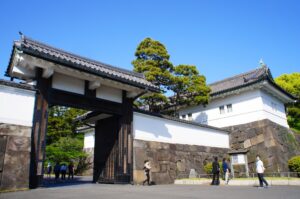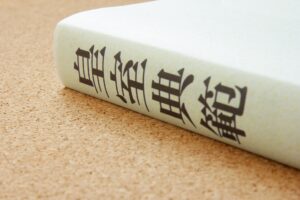The Jūnihitoe is an emblem of Japanese courtly elegance, born in the Heian period (794–1185). Consisting of multiple layers of fine silk, it embodies the refined aesthetics, seasonal symbolism, and hierarchy of the imperial court.
Officially called Nyōbō Shōzoku (女房装束), the “attire of court ladies,” this intricate costume was once reserved for noblewomen serving at the imperial palace.
For today’s readers — travelers, fashion enthusiasts, and culture lovers — the Jūnihitoe offers not only a window into history but also timeless design inspiration and a living link to Japan’s classical heritage.
What Is the Jūnihitoe?
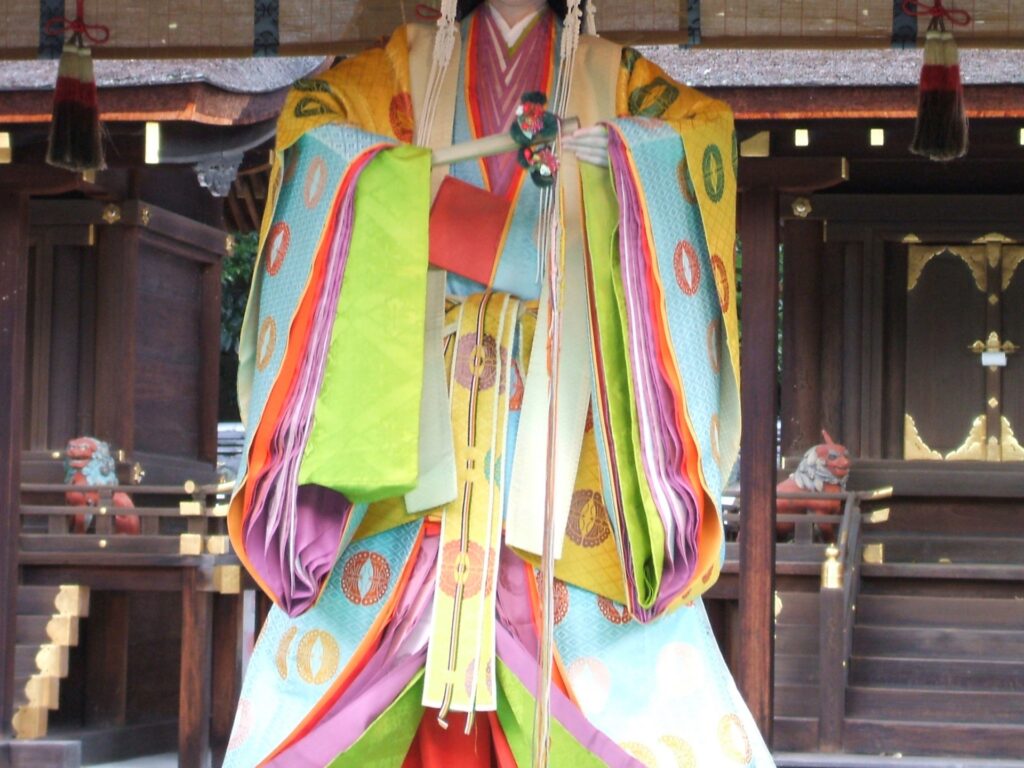
The Jūnihitoe (十二単, literally “twelve layers”) is one of Japan’s most iconic and elaborate traditional garments. It refers to the multi-layered silk robes worn by noblewomen of the Heian period (794–1185). While the name implies twelve layers, the actual number varied depending on rank, season, and occasion—sometimes as few as five or as many as twenty.
The term “Jūnihitoe” came into common use later; the ensemble belongs to the broader category Nyōbō Shōzoku (女房装束), meaning “attire of court ladies.” In formal contexts—especially for empresses and high-ranking princesses—the set is properly called Itsutsuginu Karaginu Mo (五衣・唐衣・裳), often abbreviated as Karaginu Mo (唐衣裳 or 唐衣・裳). “Jūnihitoe” remains the most widely known nickname, highlighting the garment’s multilayered elegance.
This extraordinary ensemble consists of multiple robes (hitoe) worn one over the other, each of unlined silk dyed in carefully chosen shades. The hem of each layer is visible beneath the outer robe, creating a breathtaking gradation of colour and texture. The outfit is completed with a karaginu (short jacket) and mo (long trailing skirt) that extend gracefully behind the wearer. Together, they represent refined taste, rank, and harmony with nature—the core ideals of Heian court aesthetics.
A full Jūnihitoe ensemble could weigh 15–20 kilograms (33–44 lbs). Dressing required several attendants and hours of careful layering. The effect, however, was sublime—an ethereal silhouette symbolizing composure, dignity, and seasonal beauty. Today, the Jūnihitoe remains one of Japan’s most exquisite examples of textile craftsmanship, embodying serenity, grace, and subtle colour harmony.
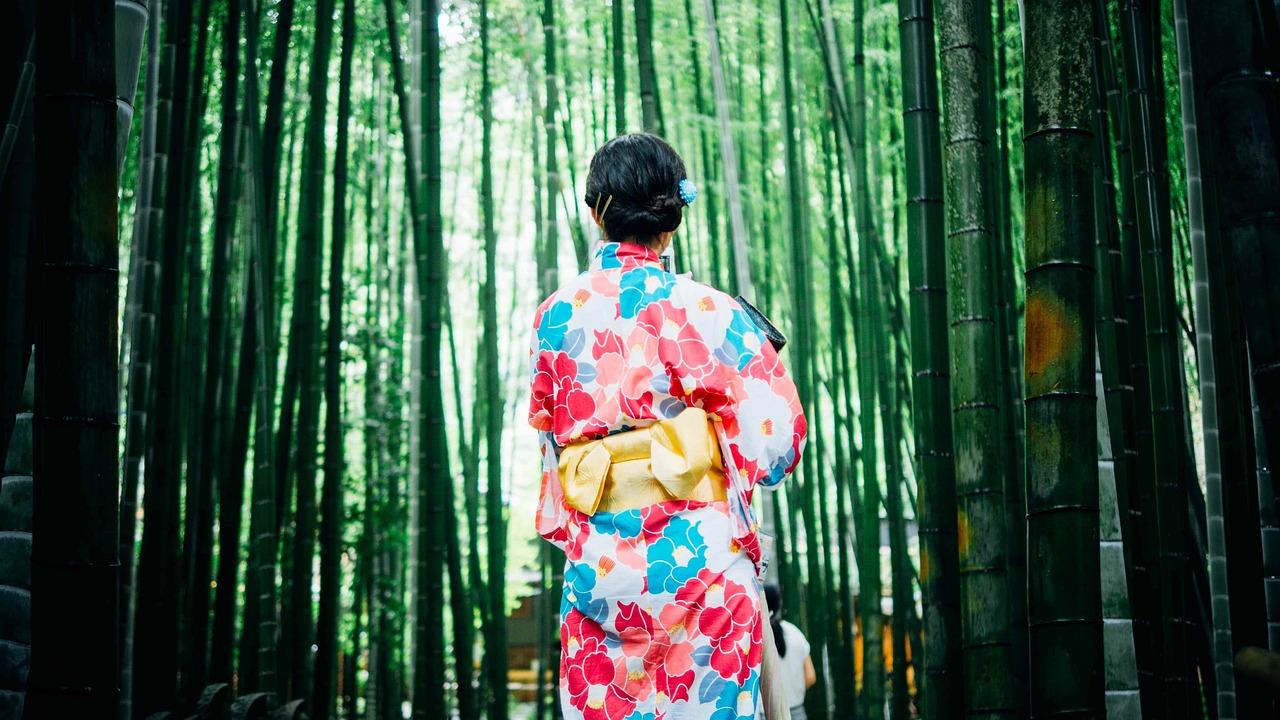
Historical Origins and Evolution
The Jūnihitoe originated in the Heian period, a time when the Japanese imperial court flourished as a center of art, poetry, and refined manners. Early on, Japanese noblewomen were influenced by Tang dynasty (China) court dress, which featured layered robes and wide sleeves. Over time, as Japan developed a distinctive cultural identity, these foreign fashions evolved into something uniquely Japanese—more delicate, more symbolic, and more deeply connected to nature.
This new aesthetic emphasized colour layering (kasane) over heavy decoration, reflecting the Heian ideal of quiet refinement. The Jūnihitoe became a reflection of a woman’s education, emotional sensitivity, and social status. The number and combination of layers could indicate her court rank or even the seasonal atmosphere.
By the Kamakura period (1185–1333), as the samurai class rose to power, the Jūnihitoe gradually faded from daily wear, replaced by simpler garments. Yet it endured as ceremonial court attire, and throughout the Edo period (1603–1868), the garment’s techniques were meticulously preserved by the imperial household.
Today, the Jūnihitoe is worn only during imperial ceremonies, such as weddings or enthronements. Its elegance continues to captivate historians, designers, and travelers alike—an enduring emblem of Japan’s refined cultural legacy and its timeless devotion to understated beauty.
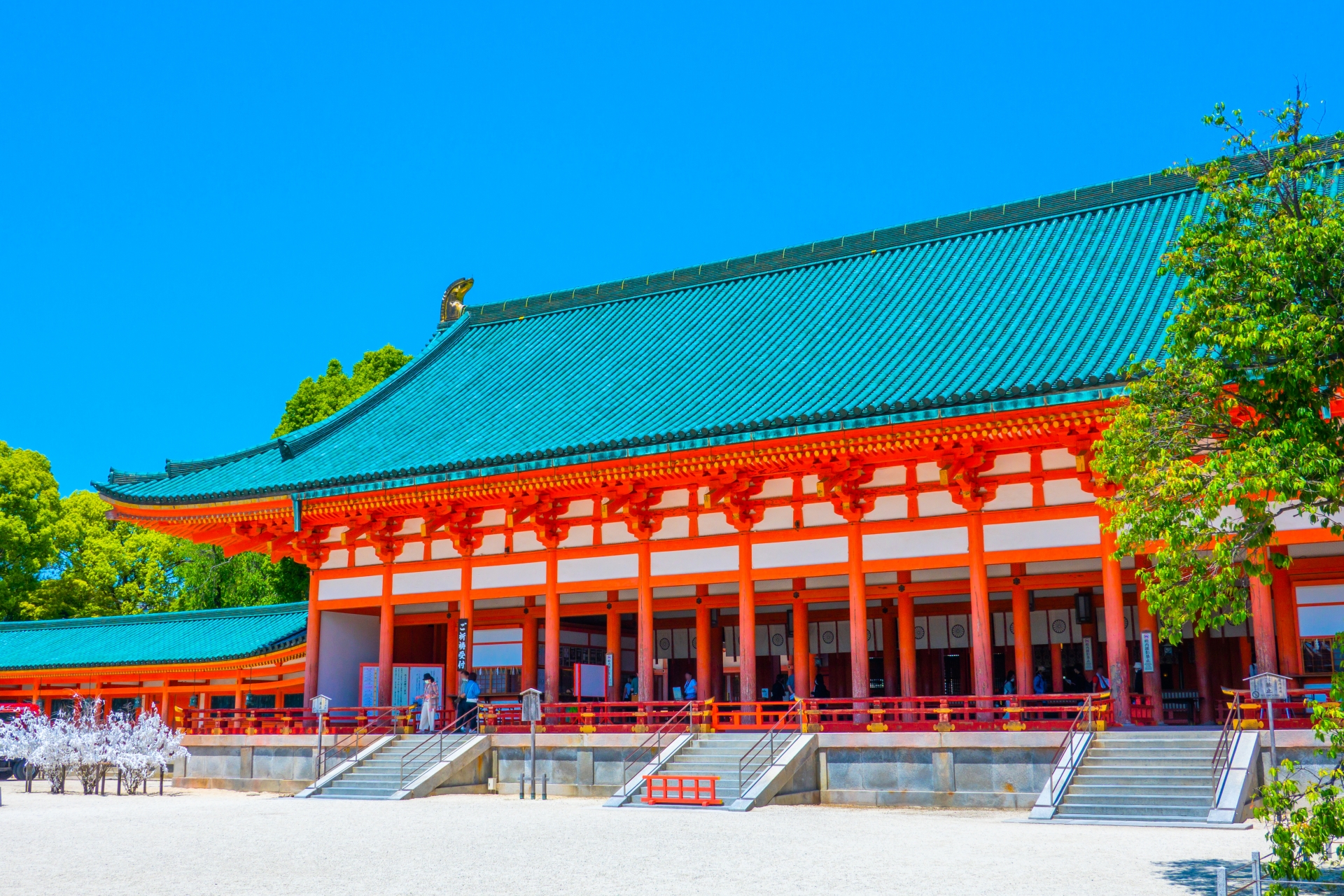
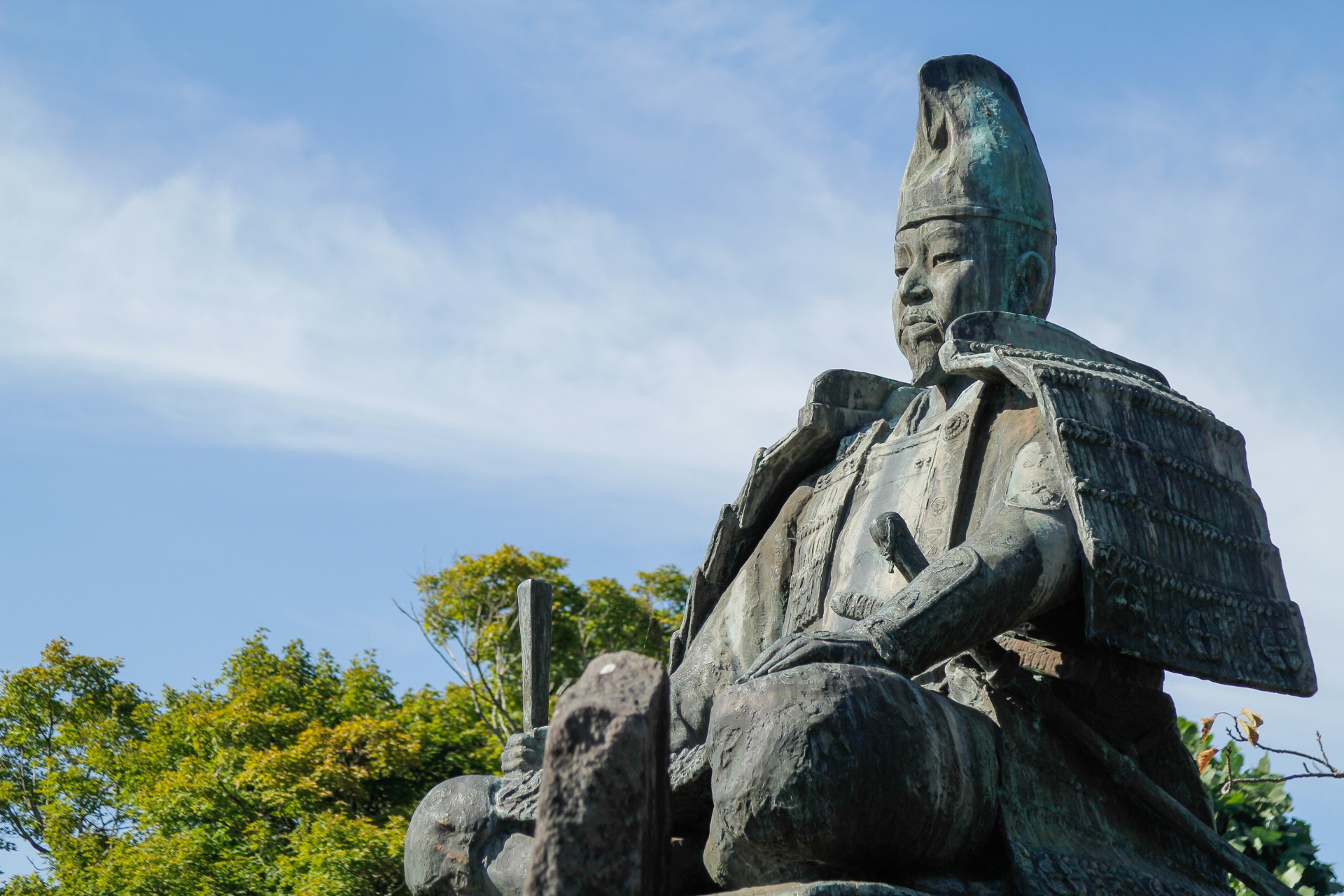

Structure, Layers, and Materials
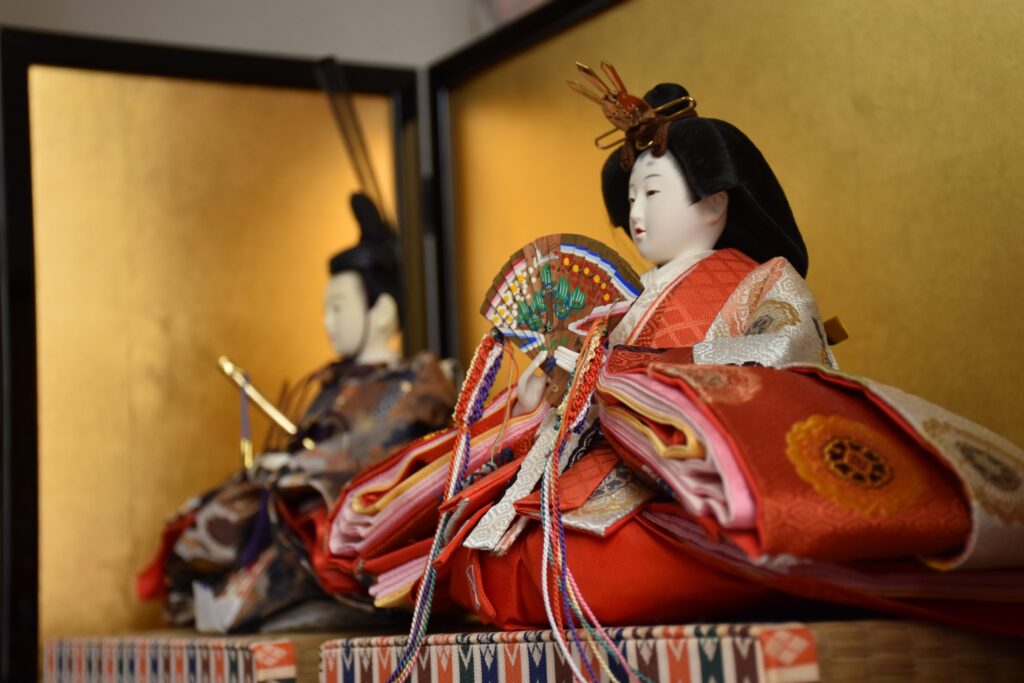
A complete Jūnihitoe ensemble consists of multiple robes, each serving a specific role in the overall harmony of the outfit. In court protocol, the core ceremonial set is known as Itsutsuginu (five inner robes) + Karaginu (short outer jacket) + Mo (long train)—hence the formal name “五衣・唐衣・裳.”
| Layer Name | Japanese Term | Description / Function |
| Underrobe | Hitoe (単衣) | Basic inner garment, unlined silk |
| Middle robes | Uchigi (袿) | 5–10 layered robes dyed in seasonal colours |
| Outer robe | Uwagi (上衣) | Thicker silk robe, visible at the sleeves and hems |
| Short jacket | Karaginu (唐衣) | Formal outer layer, often patterned or embroidered |
| Train skirt | Mo (裳) | Long trailing skirt tied at the waist; symbolizes status |
Each layer is made from pure silk, unlined and hand-dyed using traditional vegetable pigments. This contributes to its radiant texture and substantial weight—up to 20 kilograms. Every robe’s hem and sleeve edges must align perfectly, requiring expert craftsmanship and precision.
Dressing in a Jūnihitoe is itself a ritual. The wearer must remain completely still while attendants carefully fold and layer each robe, tying them with cords and sashes. The ensemble restricts movement, turning every gesture into a performance of elegance and composure. This process reflects not only the technical mastery of Japanese textile artisans but also the philosophical importance of grace and patience in Heian culture.
Colour Symbolism: Kasane no Irome (Layered Colours)
The Kasane no Irome (襲の色目) represents one of the most poetic dimensions of the Jūnihitoe. This principle involves the layering of silk robes in harmonized colours to mirror seasonal changes, natural elements, and emotions. In the Heian court, mastering these combinations was a mark of intelligence and taste.
Examples include:
- Plum Blossom (Ume no Kasane) – pink over red, symbolizing the first blossoms of spring.
- Wisteria (Fuji no Kasane) – pale purple and white, evoking the grace of early summer.
- Autumn Leaves (Momiji no Kasane) – red over gold, representing impermanence and transformation.
- Snow on Bamboo (Take no Yuki) – white over green, symbolizing purity and resilience in winter.
Each combination expressed not just beauty but also poetic emotion and sensitivity to nature. The colours often corresponded with seasonal festivals or literary themes, creating a living visual poetry worn upon the body.
Today, the philosophy of Kasane no Irome continues to inspire modern fashion, textile design, and interior aesthetics. Its focus on harmony, subtle gradation, and emotional resonance still resonates deeply with the modern eye.

Modern Usage and Cultural Experience
Though no longer everyday attire, the Jūnihitoe continues to hold ceremonial significance in modern Japan. Members of the Imperial Family wear it during events such as the Emperor’s enthronement and imperial weddings, maintaining an unbroken link to Heian tradition.
For visitors, it is now possible to experience this elegance firsthand through Jūnihitoe rental experiences offered in Tokyo, Kyoto, and Nara. Participants can don a lightweight reproduction while learning about its symbolism and history. Prices typically range from ¥30,000 to ¥100,000 (approximately $200–$700) depending on the package, number of layers, and photography options. Professional dressers assist with the entire process, ensuring authenticity and comfort.
Authentic examples can also be admired in institutions such as the Kyoto Imperial Palace, the National Museum of Japanese History, and the Heian Shrine. Many museums and cultural festivals feature reconstructed versions, allowing audiences to appreciate the splendour of this historical masterpiece.
Today, the Jūnihitoe stands as both a living art form and cultural bridge, preserving Japan’s classical grace while inspiring new generations to experience its timeless beauty.
Living Design Legacy (Fashion & Textiles)
The philosophy of the Jūnihitoe continues to influence modern fashion, textile craftsmanship, and art. Designers in Japan and abroad draw inspiration from its layering techniques, symbolic colour harmony, and sustainable artistry.
Contemporary textile artists often reference Kasane no Irome’s natural palettes—colours inspired by flowers, clouds, and light—to inform eco-dyeing and sustainable fashion practices. Others reinterpret its flowing silhouettes in haute couture, stage costumes, or cosplay design, balancing historical reverence with creative freedom.
Renowned Japanese designers such as Issey Miyake and Hanae Mori have echoed Heian layering principles, incorporating ideas of fluidity, transparency, and balance into their collections. The Jūnihitoe’s philosophy has also influenced architecture and graphic design, where the concept of layering—subtle variation upon variation—shapes minimalist yet expressive creations.
For readers, embracing this “layered philosophy” might mean experimenting with textures, tones, and depth in clothing or creative work. In doing so, one continues the thousand-year-old dialogue between elegance, restraint, and imagination.
Practical Tips for Visitors and Enthusiasts
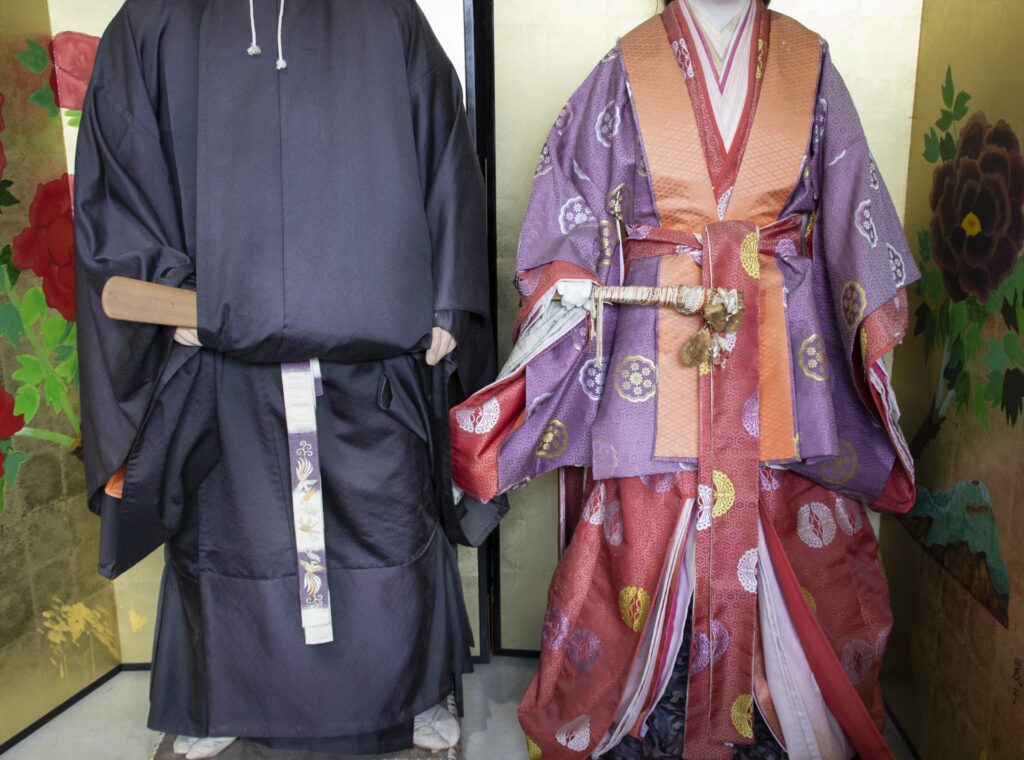
For those wishing to view or experience the Jūnihitoe firsthand, consider the following checklist:
Where to See Authentic Jūnihitoe:
- Kyoto Imperial Palace (Kyoto): Displays ceremonial costumes of the Imperial Household.
- National Museum of Japanese History (Chiba): Exhibits Heian-period textiles and court attire.
- Heian Shrine (Kyoto): Annual processions often include reconstructed Jūnihitoe sets.
Jūnihitoe Dressing Experiences:
- Available in Tokyo, Kyoto, and Nara.
- Sessions include dressing, hair styling, and professional photography.
- Preparation takes 1–2 hours; most studios use lighter silk replicas.
Etiquette and Photography:
- Handle silk only with clean hands.
- Ask for permission before photographing others.
- Avoid touching or adjusting fabrics without guidance—these garments are delicate works of art.
- Appreciate the Jūnihitoe as cultural heritage, not as cosplay.
Respectful participation allows visitors to engage not only with the garment’s beauty but also with its profound connection to Japan’s cultural soul.
FAQ: Common Questions About the Jūnihitoe
What is the official name of the Jūnihitoe?
The formal term is Nyōbō Shōzoku (女房装束), meaning “attire of court ladies.” For imperial or ceremonial contexts, the full formal name is Itsutsuginu Karaginu Mo (五衣・唐衣・裳). “Jūnihitoe” is a later nickname describing its multilayered appearance.
How heavy is the Jūnihitoe?
A complete ensemble typically weighs 15–20 kilograms (33–44 lbs) and requires several attendants to assist with dressing.
Is it always twelve layers?
Not necessarily. The number of layers varied depending on rank, season, and occasion, ranging from 5 to over 12.
Can anyone wear it today?
Authentic versions are reserved for imperial and ceremonial use, but replica experiences are available through guided cultural programs in Japan.
Conclusion
The Jūnihitoe, or Nyōbō Shōzoku, represents the pinnacle of Japan’s classical elegance—a harmony of silk layers reflecting nature’s rhythm and the dignity of the Heian court.
Although its weight and complexity limit it to ceremonial use, its influence endures in modern design, art, and philosophy. The Jūnihitoe teaches that true beauty lies not in excess but in harmony, patience, and restraint—principles that continue to define Japanese aesthetics.
In the gentle shimmer of layered silk, the quiet grace of Heian Japan still lives on. Grace, indeed, is timeless.




